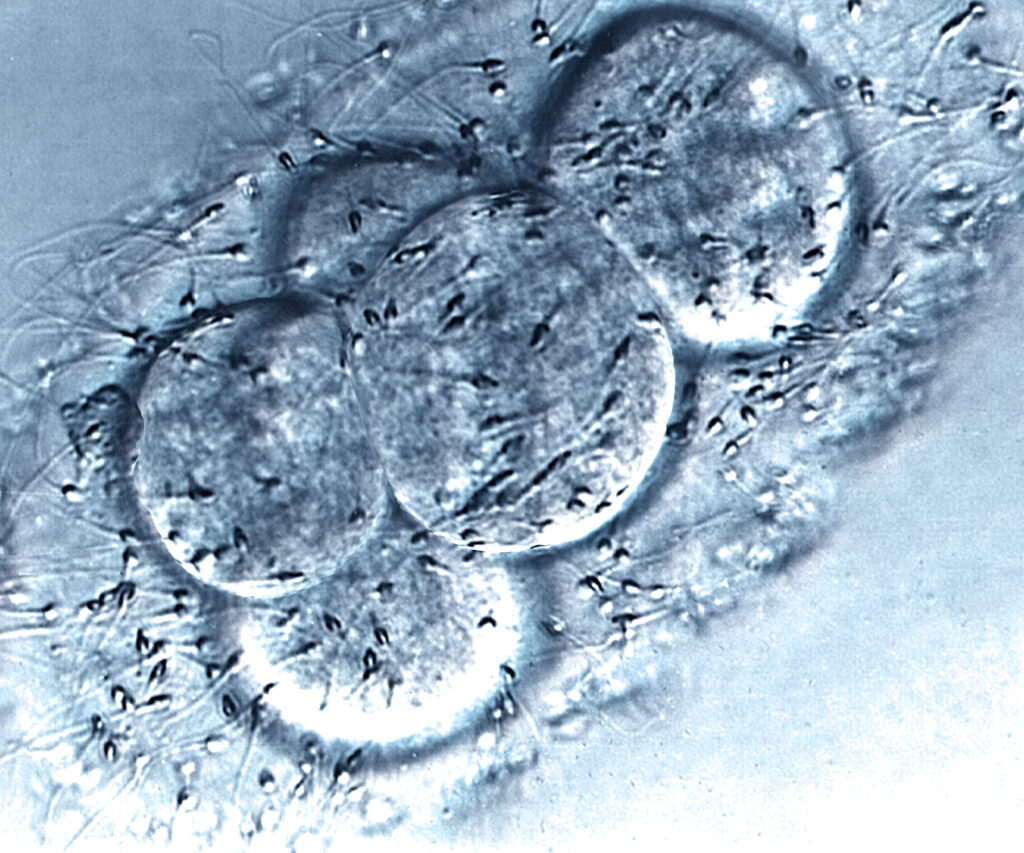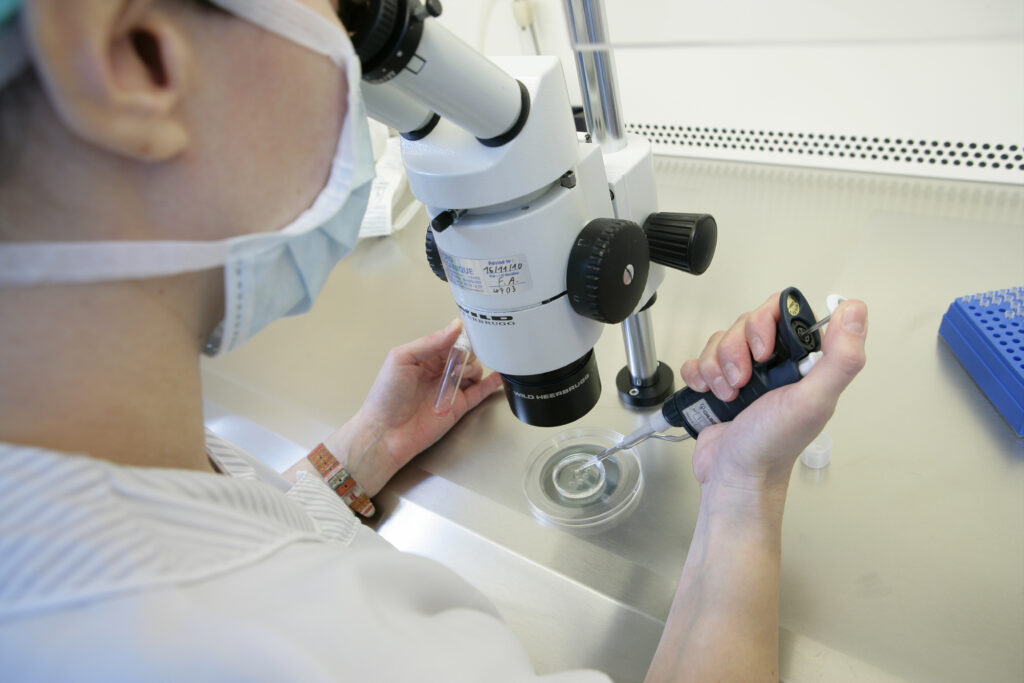Stopping the Pain and Saving Lives: Successful Treatments for Sickle Cell Disease
The U.S. Food and Drug Administration (FDA) recently approved not just one, but two new gene therapies for sickle cell disease. The first, Casgevy, was co-developed by Vertex Pharmaceuticals and CRISPR therapeutics. The second, Lyfgenia, was developed by bluebird bio. What was all this gene editing and DNA swapping about, are the therapies successful, and is this an ethical advance in medicine?
Sickle cell disease is an inherited (genetic) condition that affects about 100,000 U.S. patients, and more than 20 million people globally. People with sickle cell have severe pain, anemia, and clogged blood vessels that can damage multiple organs. Half of adults with sickle cell disease die by their early 40s.
The disease name comes from the shape taken by red blood cells; instead of the normal flexible disc shape, cells form a sickle shape that can clump and block blood vessels to the point that organs and tissues do not receive oxygen. This can result in severe pain crises, blindness, stroke, and other organ damage.

Why do the red cells form a sickle shape, and how can gene editing reverse the disease? Sickling is the result of one small mutation in the DNA, a single letter of genetic code that is changed. Yet this single molecular change leads to profound changes in the character of the patient’s hemoglobin (the protein in red blood cells responsible for delivering oxygen to tissues throughout the body). One molecule of our normal adult hemoglobin contains four proteins—two alpha-globin proteins and two beta-globin proteins—complexed with an iron-containing heme molecule. Each red blood cell is basically a bag of hemoglobin, floating through the blood, grabbing oxygen and carrying it around the body to our cells and tissues.
The single genetic mutation in sickle cell leads to a single amino acid change in the beta-globin protein, changing the character of the protein so that it tends not to form oxygen-carrying molecules but rather causes the proteins to clump within the cell and form stiff rods, stretching the disc-shaped cells into a sickle shape.
It is important to note that during our development in the womb, our bodies use a slightly different form of hemoglobin, termed fetal hemoglobin, to carry oxygen. Fetal hemoglobin is made up of two alpha-globin proteins and two gamma-globin (rather than beta-globin) proteins complexed with heme. Around the time of birth, our body stops making gamma-globin by turning off that gene, and turning on the gene to start production of beta-globin for oxygen-carrying capacity once we are out of the womb.
Treatments for serious sickle cell disease have been few and difficult to obtain. While a couple of drugs and periodic red blood cell transfusions can ameliorate some of the disease’s symptoms, so far only matched bone marrow adult stem cell transplants have been a curative option (more on this below.)
Genetic therapies such as the two now approved by the FDA aim to cure a disease, rather than simply manage its symptoms, attacking it at the genetic level to cause a permanent change. These two gene therapies are both what are termed “somatic” gene therapies. Their goal is to treat existing individuals and cure the disease without altering the germline—i.e., they are not heritable. In general, this type of gene therapy poses few ethical difficulties, although access to the treatment, including its cost, as well as complete informed consent regarding potential outcomes and side effects, can be issues.
On the other hand, genetic therapies which aim to “prevent” disease by altering the germline (heritable DNA) of eggs, sperm, or embryos, thereby affecting not only the treated (or manufactured) individual but also future generations, raise significant ethical concerns. The Charlotte Lozier Institute’s Handbook of Nascent Human Beings has more information on the science, bioethics, and moral permissibility of genetic engineering and other new technologies.
The two newly approved gene therapies both accomplish their alleviation of sickle cell disease by altering bone marrow adult stem cells of the patient; they’ve taken this route because using the patient’s own adult stem cells poses no problem of immune rejection of the therapy. Bone marrow adult stem cells are extracted from the patient and purified. In particular, the scientists are after what are called the CD34+ cells, which are the master stem cell for all blood and immune cells. The genetic alteration is done ex vivo, meaning in the lab and outside the patient’s body.
Casgevy, the therapy produced by Vertex, injects the CRISPR gene editing tool into the cells, targeting a small control region on the DNA that, when turned on, stops production of fetal hemoglobin, in particular the gamma-globin. Essentially, the enzyme makes a snip in the control region, turning off the inhibitor, thereby turning on production of gamma-globin. The result is that adult hemoglobin is replaced in the patient by fetal hemoglobin, which carries oxygen just fine.
Lyfgenia, produced by bluebird, uses a benign, inactivated virus as a “vector” to inject a modified form of normal beta-globin into the patient’s adult stem cells in the lab. The new DNA instructions then insert into the cell’s genome, where it produces normal adult hemoglobin and restores normal oxygen-carrying capacity. The slight modification in the inserted beta-globin DNA is a one amino-acid change that inhibits any aggregation of beta-globin, further eliminating the molecular problem for the patient.
For both genetic therapies, after the gene editing in the lab and quality control checks to make sure the adult stem cells are correctly altered, the cells are reinfused back into the patient. Prior to reinfusion, the patient gets a dose of chemotherapy to wipe out old faulty bone marrow adult stem cells and make space for the corrected cells. The altered adult stem cells go to the bone marrow and make themselves at home, start producing blood cells, and these new red blood cells carry oxygen normally, thus curing the patients of sickle cell disease.
Using adult stem cells, rather than fetal stem cells, as the vehicle for the genetic alteration showcases another role for this gold standard of stem cells, the only stem cell with a documented record of providing successful treatments. Direct transplant of normal beta-globin-containing adult stem cells has also been used successfully to treat sickle cell disease and related blood disorders. Until the approval of these new genetic therapies utilizing stem cells from the ailing patients themselves, adult stem cell transplant was considered the only curative treatment available for sickle cell disease and similar conditions. Since the transplant relies on finding matched donors for each patient, the cure has been limited. New research suggests, however, the possibility of using haploidentical (half-matched) transplants to increase accessibility to this critical adult stem cell treatment.
Freedom from sickle cell disease is available now using adult stem cell transplants. You can watch Desiree’s story to see the success of using adult stem cells from cord blood. You can watch more of Desiree as she discusses the transplant experience with two other patients. The success of adult stem cell therapies continues to demonstrate that the progress of science and medicine need not rely on ethically compromised research and treatment approaches.
David A. Prentice, Ph.D. is former Vice President and Director of Research for the Charlotte Lozier Institute. This article may also be accessed at the Christian Medical & Dental Association’s website.
























